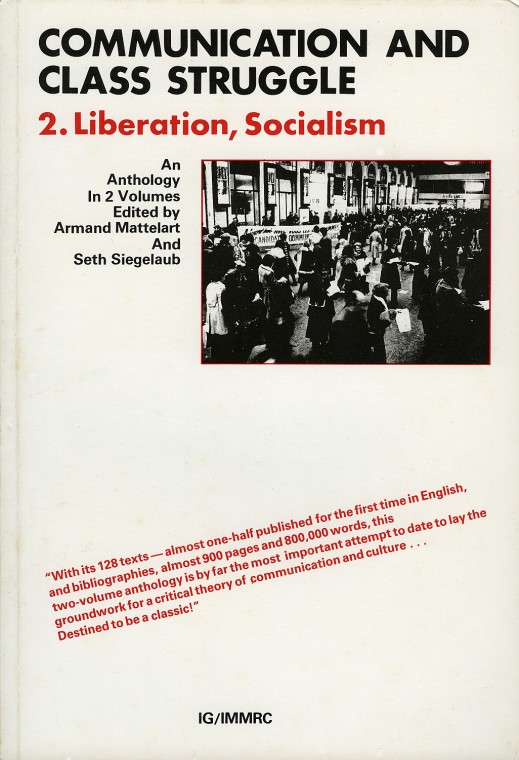Collected Works of Velimir Khlebnikov, 3 vols. (1987-1998)
Filed under poetry | Tags: · fiction, futurism, language, literary theory, literature, poetics, poetry, theatre, zaum



“Dubbed by his fellow Futurists the “King of Time”, Velimir Khlebnikov (1885–1922) spent his entire brief life searching for a new poetic language to express his convictions about the rhythm of history, the correspondence between human behavior and the “language of the stars.” The result was a vast body of poetry and prose that has been called hermetic, incomprehensible, even deranged. Of all this tragic generation of Russian poets (including Blok, Esenin, and Mayakovsky), Khlebnikov has been perhaps the most praised and the more censured.”
Edited by Charlotte Douglas (1), Ronald Vroon (2-3)
Translated by Paul Schmidt
Publisher Harvard University Press, 1987-98
ISBN 0674140451 (1), 067414046X (2), 0674140478 (3)
xii+452 & xii+403 & x+274 pages
Reviews: Cooke (of Vol 1, SEER 1989), Yastremski (of Vol 2, SEEJ 1990).
1. Letters and Theoretical Writings (1987, 29 MB)
2. Prose, Plays, and Supersagas (1989, 17 MB)
3: Selected Poems (1998, 10 MB)
More from Khlebnikov (incl 6-volume Russian collection)
Khlebnikov on Ubuweb Sound
Armand Mattelart, Seth Siegelaub (eds.): Communication and Class Struggle, 2: Liberation, Socialism (1983)
Filed under book | Tags: · aesthetics, communication, communism, everyday, information, left, life, machine, marxism, mass media, media, political economy, politics, socialism, theory

“Communication and Class Struggle, a two-volume work, is the first general marxist anthology of writings on communication, information and culture. Its purpose is to analyse the relationship between the practice and theory of communication and their development with the context of class struggle. Armand Mattelart and Seth Siegelaub, the editors, have selected more 128 essential marxist and progressive texts originating in over 50 countries and written since the mid-nineteenth century to explain three interrelated phenomena: (1) how basic social, economic and cultural processes condition communication; (2) how bourgeois communication practice and theory have developed as part of the capitalistic mode of production; and (3) how in the struggle against exploitation and oppression, the popular and working classes have developed their own communication practice and theory, liberated mode of communication, culture and daily life.
The second volume provides an analysis of the development of popular and working-class communication and culture, its theory and practice under different political-social and historical conditions, and its contemporary expression. The book contains 64 texts. 38 are published for the first time in English, and some texts appear for the first time in any language. In addition, it includes a 650-entry bibliography.” (from the back cover)
Publisher International General, New York, and International Mass Media Research Center (IMMRC), Bagnolet, 1983
ISBN 0884770192, 9780884770190
438 pages
Review: Dallas W. Smythe (Journal of Communication 1985, p 218ff).
PDF (40 MB, updated to OCR’d version on 2017-10-30 via Memory of the World)
See also Volume 1.
Robert Morris: Continuous Project Altered Daily: The Writings of Robert Morris (1993)
Filed under book | Tags: · art, art criticism, art theory, land art, minimal art, perception, sculpture, space

“Robert Morris is best known for his significant contributions to minimalist sculpture and antiform art, as well as for a number of widely influential theoretical writings on art. Illustrated throughout, this collection of his seminal essays from the 1960s to the 1980s addresses wide-ranging intellectual and philosophical problems of sculpture, raising issues of materiality, size and shape, anti-illusionism, and perceptual conditions.
Included are the influential ‘Notes on Sculpture’ which in four parts carefully articulates the shifting terrains of sculpture during the 1960s, tracing its movement from the gestalt-driven unitary forms of minimalism, through permutable pieces to the formally dispersed process-oriented antiform art that appeared later in the decade, and Morris’s landmark essay on ‘Anti Form’, which marked a departure from art as object. In ‘The Art of Existence’, Morris deftly and humorously invents three artists, who in their movement away from object-art and toward the extra-visual, reveal the limits and conditions of modern sculpture. Essays of the 1970s and 1980s reveal Morris’s preoccupation with the broad conditions of memory and space, which were explored in his experiments with land reclamation and land art, with labyrinthine environments and carceral imagery. In the later essays, Morris looks at modern art’s development in America, based on a framework of strategies produced by Duchamp, Pollock, and other key figures. And in a refiguration of an interview with Roger Denson, Morris acts out a subtle mockery of himself and his art, collapsing the high seriousness of the intended format into a playful scheme.”
Publisher MIT Press, 1993
An October Book
ISBN 026213294X, 9780262132947
xi+326 pages
Reviews: Gary Shapiro (Journal of Aesthetics and Art Criticism 1997), Tony Godfrey (Art Book 1994).
PDF (45 MB)
Comment (0)
